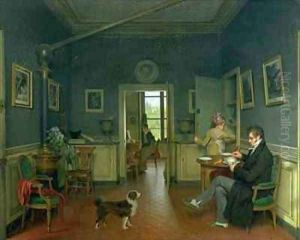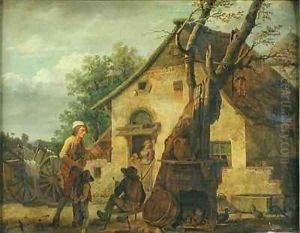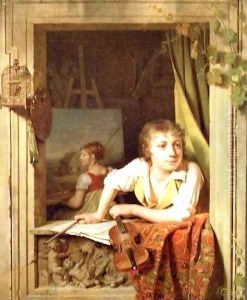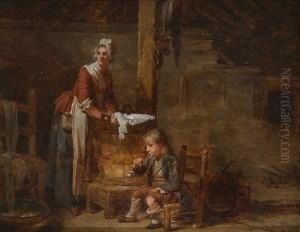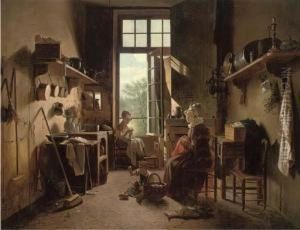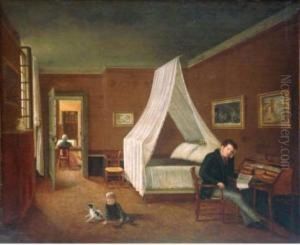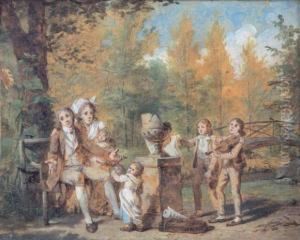Martin Drolling Paintings
Martin Drolling was a French painter, born on October 7, 1752, in Oberbergheim, now part of Germany. He is known for his highly detailed still lifes and genre paintings, as well as for his contributions to Neoclassicism. Drolling's early life was marked by his move to Paris, where he studied under his compatriot, the painter Michel Martin Drolling, who was also his father. Martin Drolling the elder was a respected artist in his own right, and he greatly influenced his son's artistic development.
Under his father's tutelage and the broader influence of Neoclassicism, Drolling absorbed the principles of clarity, order, and beauty. He began to exhibit his work at the Paris Salon, where he gained considerable recognition. His paintings often depicted domestic scenes, imbued with a sense of calm and order that reflected the Neoclassical aesthetic. He was also adept at portraying textures and surfaces, which made his still-life paintings particularly lifelike and admired.
During the French Revolution, Drolling's art continued to evolve, and he adapted to the changing political climate. He was able to navigate the tumultuous period by focusing on non-political subjects that appealed to the emerging bourgeoisie, who were his primary patrons. After the Revolution, he enjoyed the patronage of Napoleon's regime and continued to exhibit his work, which by then included portraits and historical subjects in addition to his genre scenes and still lifes.
Drolling's legacy includes not only his own work but also his influence on the next generation of artists. His daughter, Louise-Adéone Drolling, became a painter, and his son, Michel Martin Drolling, followed in his footsteps to become a well-regarded artist in the Neo-classical style. Martin Drolling's work is characterized by meticulous attention to detail, a clear and harmonious composition, and a dedication to the portrayal of ordinary life with dignity and respect. He passed away on December 16, 1817, in Paris, leaving behind a body of work that continues to be appreciated for its technical mastery and serene beauty.









